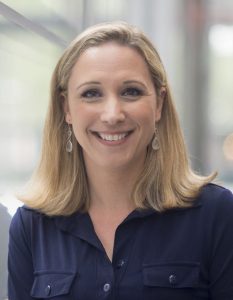Patient Safety Awareness Week is a time for the health care community to come together for a conversation about specific strategies for keeping our patients safe. And as the number of opioid-related adverse drug events (ADEs) in the United States has been on the rise, it’s also a great opportunity to share an in-depth look at our Pathways to Safer Opioid Use training.
ODPHP developed the interactive training based on the opioid-related recommendations in the National Action Plan for Adverse Drug Event Prevention (ADE Action Plan). It’s designed to teach strategies for the safe use of opioids to manage chronic pain — and ultimately to help the medical community prevent opioid-related ADEs.
Pathways teaches core competencies of safer opioid use by playing out different scenarios in live-action videos and demonstrating a multidisciplinary, team-based approach for treating patients with chronic pain. Those who take the training can learn about preventing opioid-related ADEs from the perspective of 4 different characters, including a pharmacist — since pharmacists play a crucial role in keeping patients safe.
To get a pharmacist’s take on the training, we recently sat down with Dr. Anita Jacobson, Clinical Associate Professor at the University of Rhode Island College of Pharmacy. Read on for some highlights from our conversation.
What role do pharmacists play in preventing opioid-related ADEs?
There are a lot of pieces here. First, pharmacists need to really take the time to look at prescription drug monitoring programs (PDMPs) — you have to make sure you have all the information that’s available to you. It’s also very important to check that doses for patients managing acute pain are appropriate — for example most patients shouldn’t get more than a couple days’ supply of a medication. And of course you need to carefully coordinate care with doctors and other health care providers who are treating your patients.
What about interacting with patients?
I think the most important thing is feeling confident and comfortable enough to really talk to your patients. First, you need to listen and validate their experience and concerns, then you need to be able to say, “Would it be okay if I talk to you about why I’m worried about this prescription?” Ask open-ended questions — have a dialogue. You have to be able to navigate the difficult conversations.
And that comes with training and experience. It’s like anything else in that you get better at it over time. That’s why I often work motivational interviewing into my teaching — it can really help focus in on how to have difficult conversations with patients. Because when you’ve identified a patient who’s at risk, you can’t sugarcoat it — you have to be able to say, “You are at risk, and that includes the risk of death from a breathing emergency.”
You also need to be prepared to go beyond the standard pharmacy model, which often puts the onus on the patient. Pharmacists learn to ask patients if they have any questions. But if all you do is answer questions, you’re really not providing comprehensive patient care. In order to prevent ADEs, you need to take it further and anticipate potential medication-related problems.
What were your impressions of the Pathways to Safer Opioid Use training?
The training was really well done — it definitely exceeded my expectations. It offered a lot of different options in the “choose your own adventure” format, and the scenarios were really detailed and nuanced. I was impressed by the interactivity and versatility — there were so many options included with each scenario. For example, when playing the pharmacist character, you could refuse to fill a prescription and keep it or you could refuse to fill a prescription and make a note on it. Including that level of detail is really valuable.
It’s clear that pharmacists were involved in developing it — the pharmacy scenarios were so specific to our field. It reflected an understanding of the pace of pharmacies and the logistical demands, like phones ringing and long lines. But it was also realistic in an interpersonal sense: it has you deal with the anger and frustration of a patient, and it does so through subtleties like body language. I appreciated that because pharmacists have to learn to pick up on those subtleties — patients aren’t typically going to come out and explicitly say things that might be a red flag to a pharmacist.
I also really liked that the training pointed out that our current pharmacy model puts a lot of the burden on the patient to manage their own medications, as I mentioned. That’s a really important thing to be aware of.
Any final thoughts?
In the wake of the opioid overdose epidemic, there’s a lot of room for pharmacists to take initiative to help save lives. One of the most important things we can do is to advocate for patients taking opioids to have easy access to naloxone — a medication we know can reverse breathing emergencies caused by opioids. That’s something I’d really like to see included in future iterations of the Pathways training.
Going forward, I’d recommend Pathways to pharmacy chains and independent pharmacies that are looking for employee training. And I can definitely see using it with my own students — I’d love to have them try the different scenarios and see how they play out.
Want to take the training yourself? Register now — and keep in mind that free CPE or CME credit is available! You can also learn about the current evaluation of the Pathways training.




